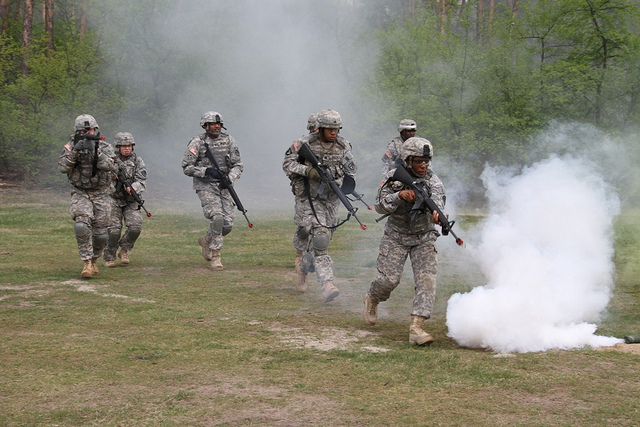
Amid Ukraine-Russia Crisis, New Decisions Will Define America’s ‘Force Posture’ for Years to Come
Almost a year after Russia’s invasions of Ukraine, the US government will roll out a series of decisions in the next month that will play a big role in shaping how the United States and its transatlantic allies respond in the long term. From Moscow to Kyiv to Berlin and Brussels, the United States’ allied, partners and antagonists will be watching these key signals of the Obama administration’s commitment to European security.
This process began yesterday, when the Department of Defense rolled out a long-awaited decision—called the European Infrastructure Consolidation (EIC) Review—to close some fifteen US military facilities in Europe over the next five or six years. This review was begun in January 2013 by Secretary of Defense Leon Panetta to ensure a rational implementation of changes made in 2012 to America’s global military posture that led to a reduction of US forces in Europe. Congress also demanded a report on what facilities could be eliminated or consolidated in Europe before any bases are shut in the United States.
The facilities to be closed include the U.S. Air Force base in Mendenhall, UK as well as sites in Germany, Italy and Portugal. The Pentagon asserts this consolidation will save $500 million annually without reducing US capabilities.
This announcement—and particularly its unavoidable theme of a reduced U.S. presence in Europe—highlight the importance of two related initiatives that will mature in the coming weeks.
Reassuring Europe With US Forces
The first is the European Reassurance Initiative (ERI). Last June in Warsaw, President Obama announced this effort as a response to Russia’s invasion of Ukraine. The ERI is intended to: increase the presence of US forces in Europe through exercises, training and rotational deployments; enhance the responsiveness of U.S. forces to crises in Europe by improving reception facilities and prepositioning equipment; and improve the indigenous defense and security capabilities of allies and partners. The President asked Congress to provide $1 billion to fund this initiative.
Now that Congress has provided those funds (in the 2015 National Defense Authorization Act, which the President signed into law last month) the administration is expected this month to finalize and articulate its plans on exactly how those ERI funds will be used.
The second important initiative is the NATO Readiness Action Plan. This was approved by NATO heads of state at their September 2014 Wales Summit to bolster the Alliance’s defensive capabilities. These include an increase in the size and number of military exercises, reinforcement of the Alliance’s Baltic air policing mission, and plans to strengthen the NATO Response Force with a spearhead element of some four thousand troops backed by air, maritime and special forces capable of being launched on a few days’ notice.
NATO defense ministers will meet in early February to review the progress made on the Readiness Action Plan, as well as proposals drawn from the NATO Military Committee and the Alliance’s military headquarters. Like the US European Reassurance Initiative, these might involve new or upgraded force reception facilities, and prepositioned assets in Central Europe, among other actions.
It also is important to note that in late December, the National Security Council completed a review of US policy toward Russia. The review is reported to have concluded that the United States should stay on the current course of its response to Russia’s invasion of Ukraine and its increasing assertive actions elsewhere. Elements of this White House review may become public in the next few weeks.
These interrelated decisions and plans to emerge in the coming weeks will be examined closely not only as indicators of President Obama’s determination to counter Russia’s military aggression and assertiveness, but also because they will shape the operational foundation of the transatlantic security relationship for years to come.
Ian Brzezinski is a resident senior fellow with the Brent Scowcroft Center on International Security and a former deputy assistant secretary of defense for Europe and NATO policy.
Image: US Army troops stage an exercise in Germany in 2012. Since the United States decided that year to reduce its forces in Europe, it has faced new pressures to keep a strong "force posture" on the continent in response to Russian invasion and assertiveness toward its neighbors. (US Army/ NATO Brigade photo)

